Looking forward to speaking at the next TIBBE seminar!
04.09.2025 20:58 — 👍 6 🔁 1 💬 0 📌 0Maria Antonietta Tosches
@matosches.bsky.social
Associate Professor @ Columbia University. Brain evolution, plasticity and regeneration. www.tosches-lab.com
@matosches.bsky.social
Associate Professor @ Columbia University. Brain evolution, plasticity and regeneration. www.tosches-lab.com
Looking forward to speaking at the next TIBBE seminar!
04.09.2025 20:58 — 👍 6 🔁 1 💬 0 📌 0Scientists have mapped the entire connectome of a 3-day-old marine worm larva (Platynereis dumerilii), including over 9,000 cells and 200+ neuronal types. This resource can help us understand how nervous systems evolved and coordinate whole-body movement.
buff.ly/IPxFCHs
We haven't explored this yet, but it is definitely an important question, and the Lamanna dataset would be the natural starting point.
01.09.2025 18:12 — 👍 1 🔁 0 💬 0 📌 0
If you want to learn more about the evolution of this fascinating cell type, make sure to also check out the beautiful study by @idoiaeu.bsky.social on sharks www.biorxiv.org/content/10.1... end 🧵
25.08.2025 19:42 — 👍 4 🔁 1 💬 1 📌 0
Interestingly, Cajal-Retzius cells are VERY similar at the transcriptomic level to another ancestral cell type, the external tufted cell in the olfactory bulb. This suggests that Cajal-Retzius cells may have evolved in early vertebrates from cells involved in olfactory processing. 🧵 6/7
25.08.2025 19:42 — 👍 7 🔁 0 💬 1 📌 0next, Eli and @giacomogattoni.bsky.social hunted Cajal-Retzius cells in chicken 🐓 and three species of fish 🐟, to show that yes, this is an ancestral cell type in the vertebrate brain. 🧵 5/7
25.08.2025 19:42 — 👍 2 🔁 0 💬 1 📌 0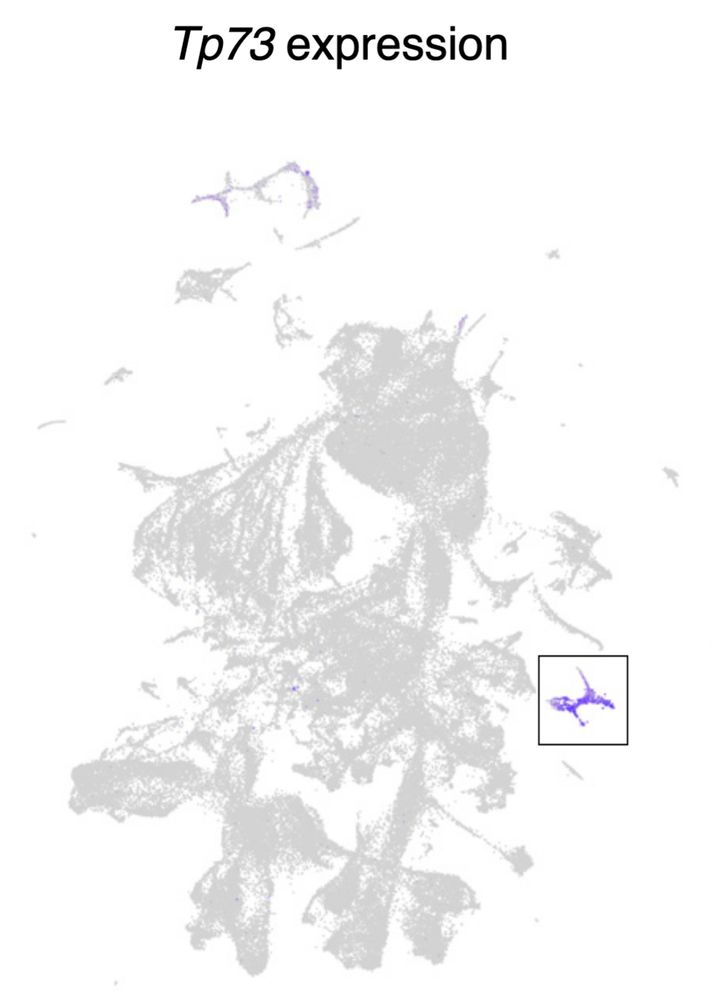
… Eli Gumnit started digging into our new salamander developmental scRNAseq dataset and, long story short, found that 80 cells (out of 127,788 cells) had an unmistakable Cajal-Retzius cell transcriptomic profile! 🧵 4/7
25.08.2025 19:42 — 👍 1 🔁 0 💬 1 📌 0Given that a complex, six-layered cerebral cortex exists only in mammals, were Cajal-Retzius cells a mammalian innovation that transformed cortical development? The answer is: not really… 🧵 3/7
25.08.2025 19:42 — 👍 0 🔁 0 💬 1 📌 0
More than 100 years ago, Santiago Ramon y Cajal and Gustaf Retzius independently described intriguing neurons on the surface of the developing cortex. Decades later, Cajal-Retzius cells were found to release Reelin, a signaling molecule critical for the correct development of cortical layering 🧵 2/7
25.08.2025 19:42 — 👍 1 🔁 0 💬 1 📌 0
Excited to share our latest work on brain evolution, where we dive into the evolution of Cajal-Retzius cells! If you are interested in cell type evolution and cerebral cortex evo-devo, please read on… www.biorxiv.org/content/10.1... 🧵 1/7
25.08.2025 19:42 — 👍 47 🔁 20 💬 1 📌 2So true!
14.08.2025 01:00 — 👍 1 🔁 0 💬 0 📌 0
We’re looking for curious, innovative science leaders at EMBL Heidelberg! 🔬🧬🦠
Join a vibrant, interdisciplinary community where collaboration and innovation are nurtured at all levels.
Take a look at these four open positions 👇
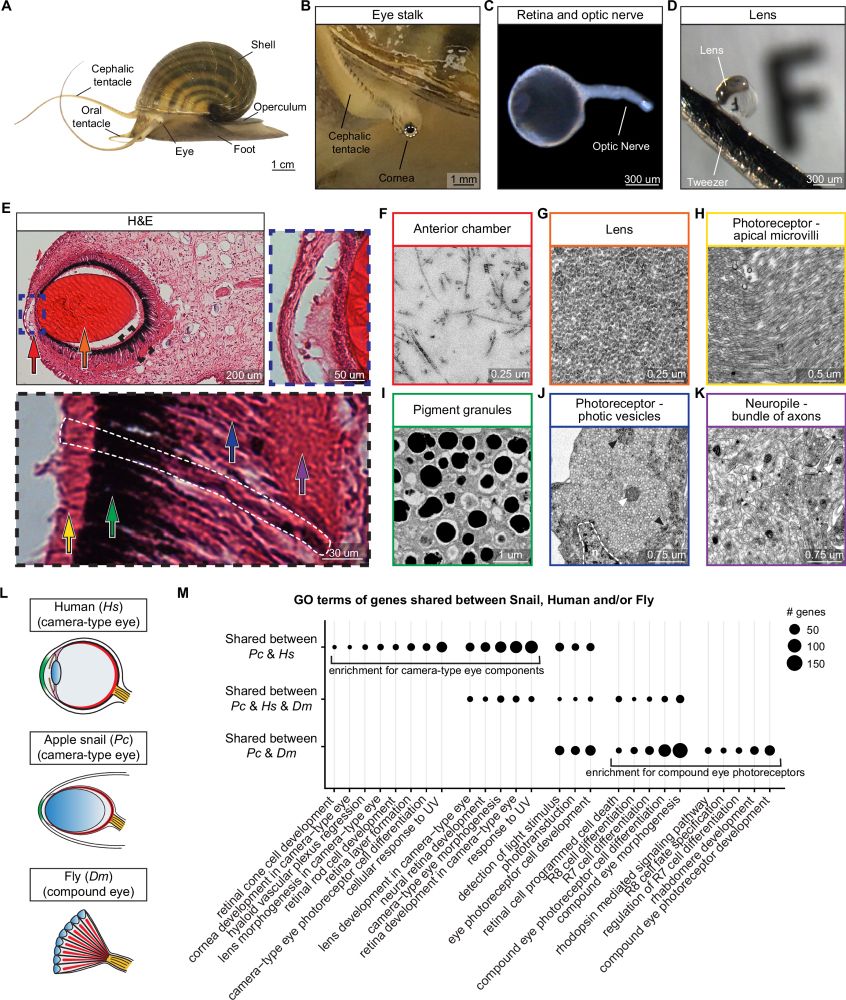
Evolution’s eye game is wild, but mollusks take it to another level
CRISPR in apple snails gives us a new model to dissect how nature rebuilds complex organs like the camera-type eyes we humans possess
It turns out Evolution doesn’t just innovate, it rewinds, remixes, & regenerates
rdcu.be/ezw0t
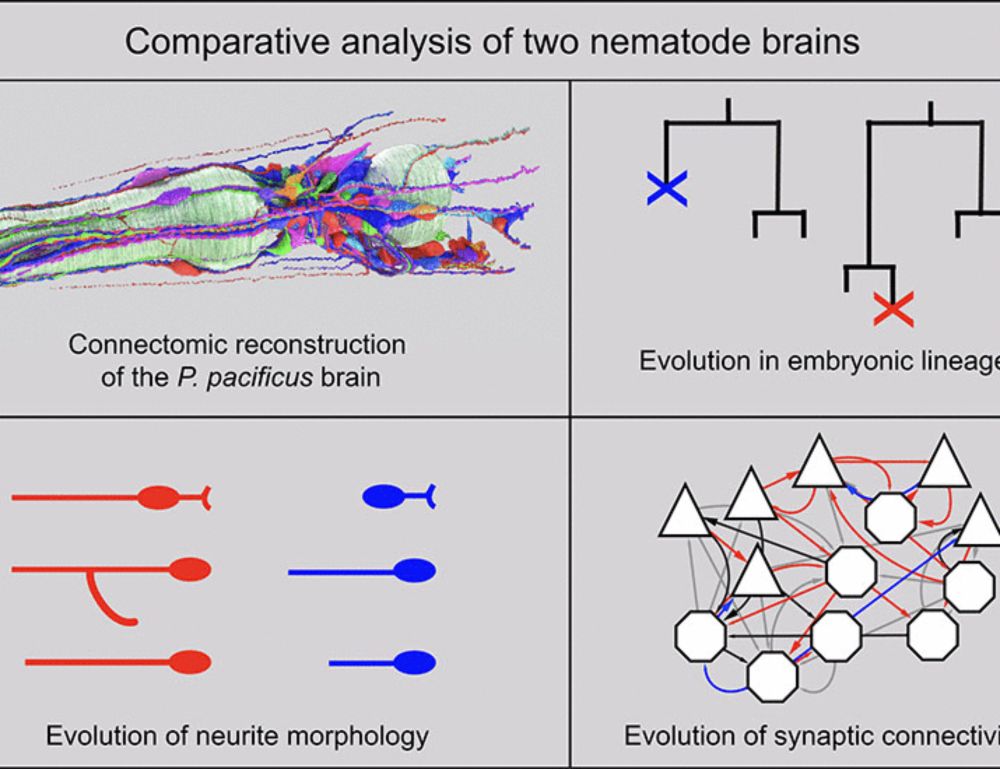
Happy to share our publication - Comparative connectomics of two distantly related nematode species reveals patterns of nervous system evolution www.science.org/doi/10.1126/...
31.07.2025 18:42 — 👍 36 🔁 19 💬 1 📌 2Congratulations Ish! We are so lucky to have you as a colleague here at Columbia!
02.07.2025 15:48 — 👍 1 🔁 0 💬 0 📌 0Today, the @fwf-at.bsky.social honors Elly Tanaka, IMBA's Scientific Director, with the Wittgenstein Award – the premier research award of Austria - for her groundbreaking discoveries in the field of regenerative biology. Congratulations, Elly!
More on the award: imba.science/43Y93sC
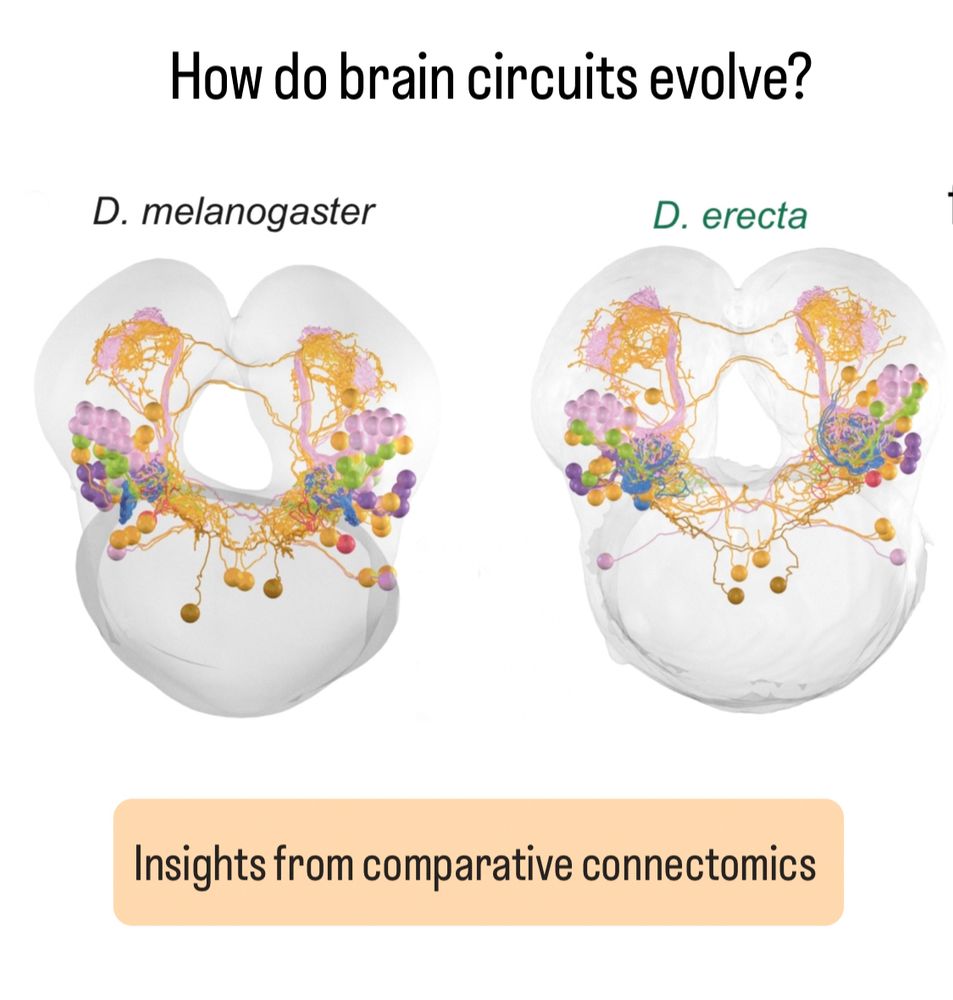
How do brain circuits evolve? We started looking for some answers by using synapse-resolution cross-species comparative connectomics on an entire olfactory circuit 👇
bit.ly/44aVm9E

Get the word out far and wide. New opportunity from the Simons Foundation in the Eco-Evo space.
2026 Simons Graduate Fellowship in Ecology and Evolution Awards, due July 31, 2025, only for incoming PhD students who plan to start their PhDs in Fall 2026.
www.simonsfoundation.org/grant/simons...

The axolotl, represented here by the Mexican axolotl Ambystoma mexicanum, has the ability to regenerate its brain. In this 2022 issue, a group of four papers profiles amphibian and reptile brain neurons with single-cell transcriptomics. Analyses lend insight into why the axolotl brain retains regenerative capability that the mammalian brain has lost as well as how structural brain innovations arose during evolution.
The axolotl has the ability to regenerate its brain.
Using single-cell transcriptomics, four Science studies in 2022 revealed evolutionary innovations in reptile and amphibian brains.
Learn more during #AmphibianWeek: scim.ag/3EEKMxZ
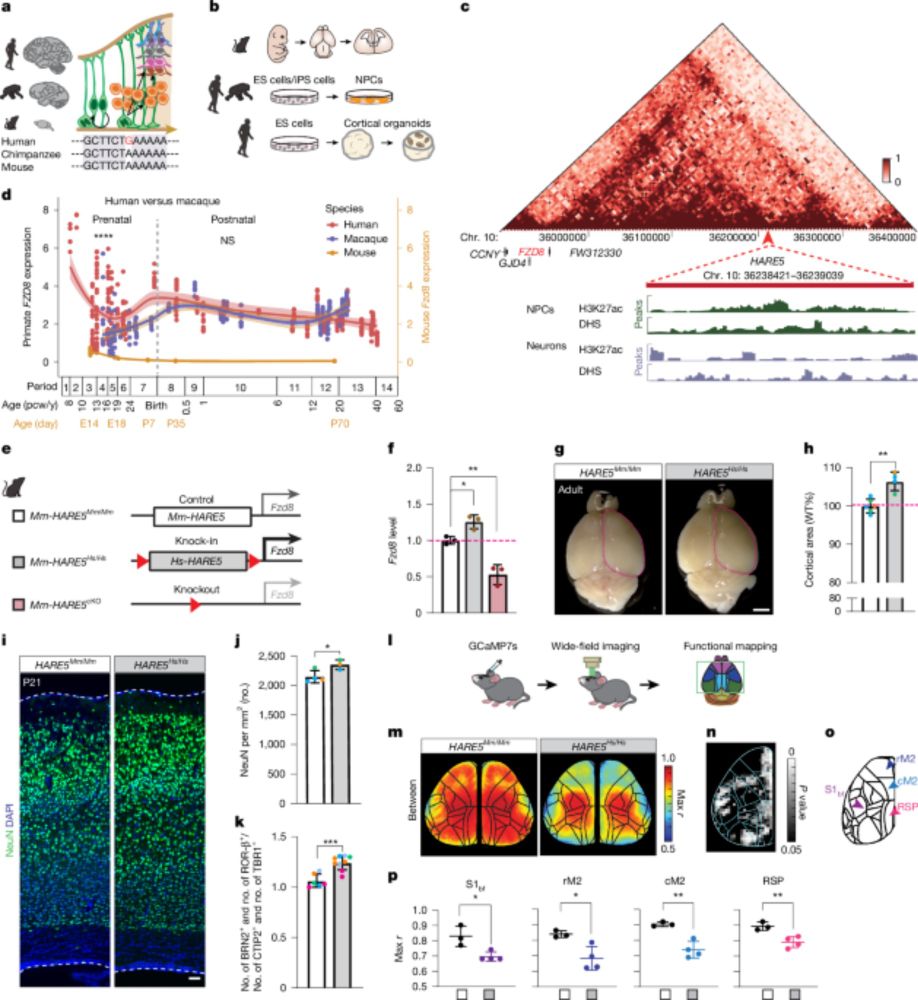
Thrilled to share our latest study out in @natureportfolio.nature.com led by the fantastically talented Jing Liu. Our study provides insight into a long standing question in biology: What molecular features make us uniquely human and how do these function? www.nature.com/articles/s41...
14.05.2025 16:09 — 👍 169 🔁 68 💬 19 📌 8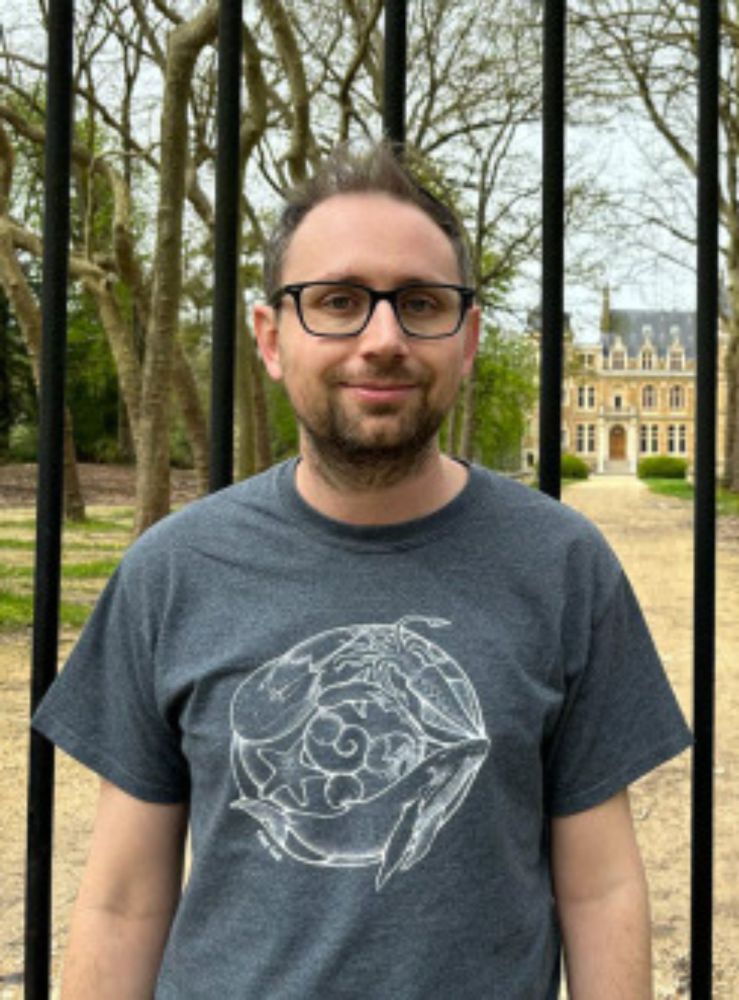
Check out our latest issue to read a Q&A with @thibautbrunet.bsky.social, who studies the evolutionary origin of animal morphogenesis at the Institut Pasteur. www.cell.com/current-biol...
14.05.2025 14:26 — 👍 34 🔁 10 💬 0 📌 1
Wonderful work by @nataliabaumann.bsky.social & the @djabaudon.bsky.social team showing how progenitor metabolism regulates region-specific neurogenesis! Glad our group could contribute, thanks to Eleonora Conti & Roberto Sansevrino.
www.cell.com/cell/fulltex...

New preprint from my PhD in @amphispacelab.bsky.social is out! 🥳
We investigated the evolution of my favorite gene FoxQ2 across 21 animal phyla, and found three ancient paralogs with a very dynamic history.
More on phylogeny, synteny, and comparative in situs in the 🧵 below!
tinyurl.com/2j96px45

Please mark your calendars and join us next May 20th in the next session of the webinar series "The future of Neuroethology". We will have a line-up of amazing scientists as usual, we will learn about locusts, newts and cichlids!
16.04.2025 19:05 — 👍 20 🔁 10 💬 0 📌 1Happy to see my PhD work in the Fleischmann lab at Brown University @carneyinstitute.bsky.social published in
@natureneuro.bsky.social! -Single-cell genomics of the mouse olfactory cortex reveals contrasts with neocortex and ancestral signatures of cell type evolution nature.com/articles/s41...
Delighted to see our paper finally out in @cp-neuron.bsky.social! Together with Ian MacRae, we developed a new toolbox to study microRNAs and used it to find new mechanisms of Purkinje cell development. Please see the tweetorial from researcher extraordinaire @norjin.bsky.social for details.
02.04.2025 19:47 — 👍 20 🔁 4 💬 3 📌 0